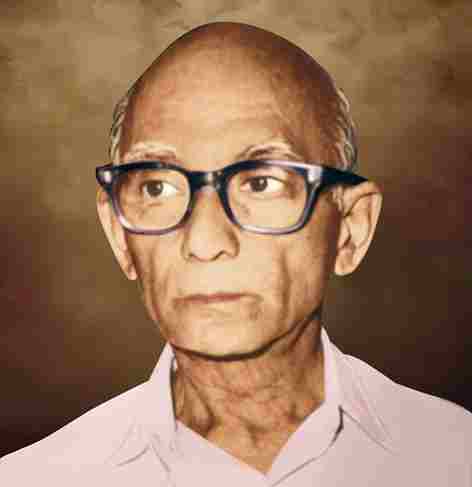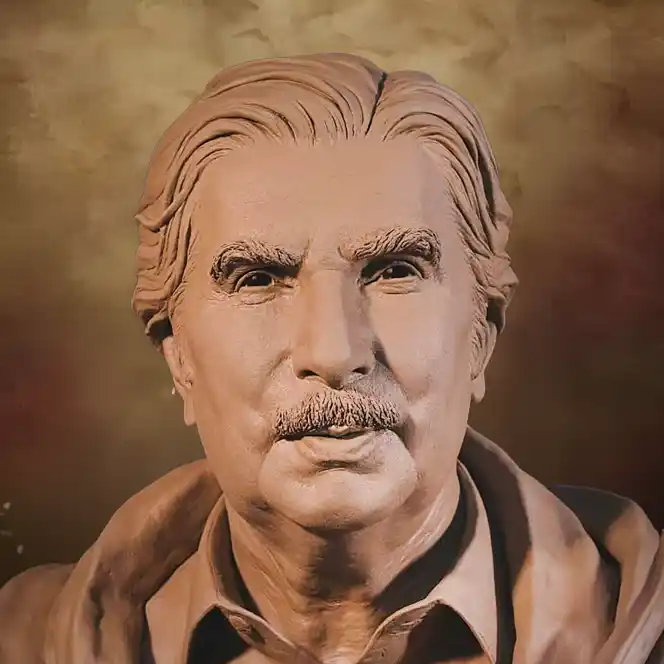| Birth Name |
Narayan Gokaldas Nagwani |
| Pen Name |
Shyam |
| Born |
Saturday، 22 July 1922 |
| Birth Place: |
Naushahro Feroze |
| Died |
Tuesday، 10 January 1989 |
| Remains in |
Mumbai |
Narayan Shyam (Born: July 22, 1922 – Died: January 10, 1989) was a renowned poet of the Sindhi language, born in British India in the region of Sindh. He authored several acclaimed books and is remembered as one of Sindh's most prominent literary figures.
Early Life
Narayan Shyam, born as Narayan Gokuldas Nagwani, was born on July 22, 1922, in the village of Khahi Qasim in Naushahro Feroze District, Sindh, Pakistan. He received his early education in his village and later graduated with a B.A. in 1942 from D. J. Sindh Science College, Karachi. From 1945 to 1946, he worked as a teacher in Naushahro Feroze. After the Partition of India in 1947, he moved to Delhi and joined the Post and Telegraph Audit Office as a clerk, retiring as a head clerk in 1980.
Literary Journey
Narayan Shyam was influenced by the legendary Sindhi poet Kishinchand ‘Bewas’ and was among the founding members of the "Sindhi Literary Circle" at D. J. Sindh College in Karachi. Along with other eminent poets like Sheikh Ayaz, Hari Dilgir, and Sheikh Raz, Shyam laid the foundation for modern Sindhi poetry. This group introduced new poetic forms such as free verse and sonnets to Sindhi literature, experimenting with rhythm and opening new paths for Sindhi poetry.
His first poetry collection, "Maak Phura" ("Dewdrops"), was published in 1953 alongside Hari Dilgir’s work. It featured experimental and early poems, including free verse, sonnets, and lyrical pieces. According to Tanveer Abbasi, Shyam’s poetry in this collection introduced novel and thought-provoking themes to Sindhi literature.
Shyam's second collection, "Pankhrion" ("Petals"), was published in 1955 and contained 100 rubaiyat (quatrains) and a long poem, "Roop Maya". He is particularly credited with adapting the Persian poetic form of rubaiyat into Sindhi, making it accessible and retaining the natural rhythm and tone of the Sindhi language.
Subsequent collections like "Rang Rati Lehar" ("Colorful Waves," 1956), "Waariyo Bharyo Palaand" ("Veil Full of Sand," 1968), and "Mehki Viel Subah" ("Fragrant Morning," 1983) established him as a master of the ghazal form. His collection "Roshan Chanoro" ("Luminous Shade," 1962) included ghazals, dohiras, and triolet poems, while "Maak Bhina Raabeel" ("Dew-Laden Jasmine," 1964) featured a variety of poetic forms such as haiku, waai, doha, and rubaiyat.
Narayan Shyam’s poetic mastery in ghazals earned him widespread acclaim. Arjun Hasid once wrote:
"Narayan Shyam's ghazals elevate him to the ranks of world-class poets. Just as Mir, Ghalib, and Firaq Gorakhpuri are milestones in Urdu poetry, Shyam’s ghazals hold a similar historical significance in Sindhi literature."
His poetry blends realism, humanism, impartiality, peace, and love. Shyam’s ghazals frequently depict local Sindhi settings while incorporating universal themes.
Major Works
Some of Shyam’s prominent poetry collections include:
"Boond, Lehar, aur Samundar" ("Drop, Wave, and Sea," 1986)
"Na So Rang, Na Sa Surhan" ("Neither That Color Nor That Fragrance," 1987)
"Daat aur Hayat" ("Gift and Life," 1988)
"Raahoon Pandh Piyoon" ("Paths and Journeys," 1998)
"Nikhryo Aahi Neenh" ("Love in Full Bloom," 1999)
Additionally, Shyam translated English works into Sindhi, such as Kabir’s poems ("Kabir," 1980) and Ghalib’s monograph ("Ghalib," 1986).
Themes and Style
Narayan Shyam’s poetry resonates with soft yet intense emotions, weaving a rhythm akin to the gentle flow of the Indus River. He experimented extensively with poetic forms and themes. Moti Prakash, a notable critic, remarked:
"Shyam’s poetry transcends personal pain and merges with the collective grief of humanity. He never mourned for himself but cried in every human’s sorrow and laughed in their joy."
Connection with Sindh
Although Partition physically separated Narayan Shyam from Sindh, his heart and soul remained deeply connected to the region. His poetry reflects the pain of separation from his homeland and the cultural heritage of Sindh. He wrote:
"What is life without the earth beneath my feet?
Even in death, let the wind carry me back to Sindh."
He lamented the invasion of foreign influences on Sindh and expressed his yearning for the land in verses like:
"Oh, may it never come to this—
That we read in books there was once a Sindh
And a language called Sindhi."
In another instance, he wrote:
"When my eyes rested on Shah’s Risalo today,
It felt as though I had seen Sindh after centuries."
Friendship with Sheikh Ayaz
Narayan Shyam shared a close bond with fellow Sindhi poet Sheikh Ayaz. Both poets were contemporaries and collaborated during their college days. Their works complement each other in style, themes, and literary contributions.
Narayan Shyam’s legacy remains unparalleled in Sindhi literature, as he continues to inspire generations of poets and readers with his timeless contributions.
Narayan Shyam died on 10 January 1989 in Bombay, India.











